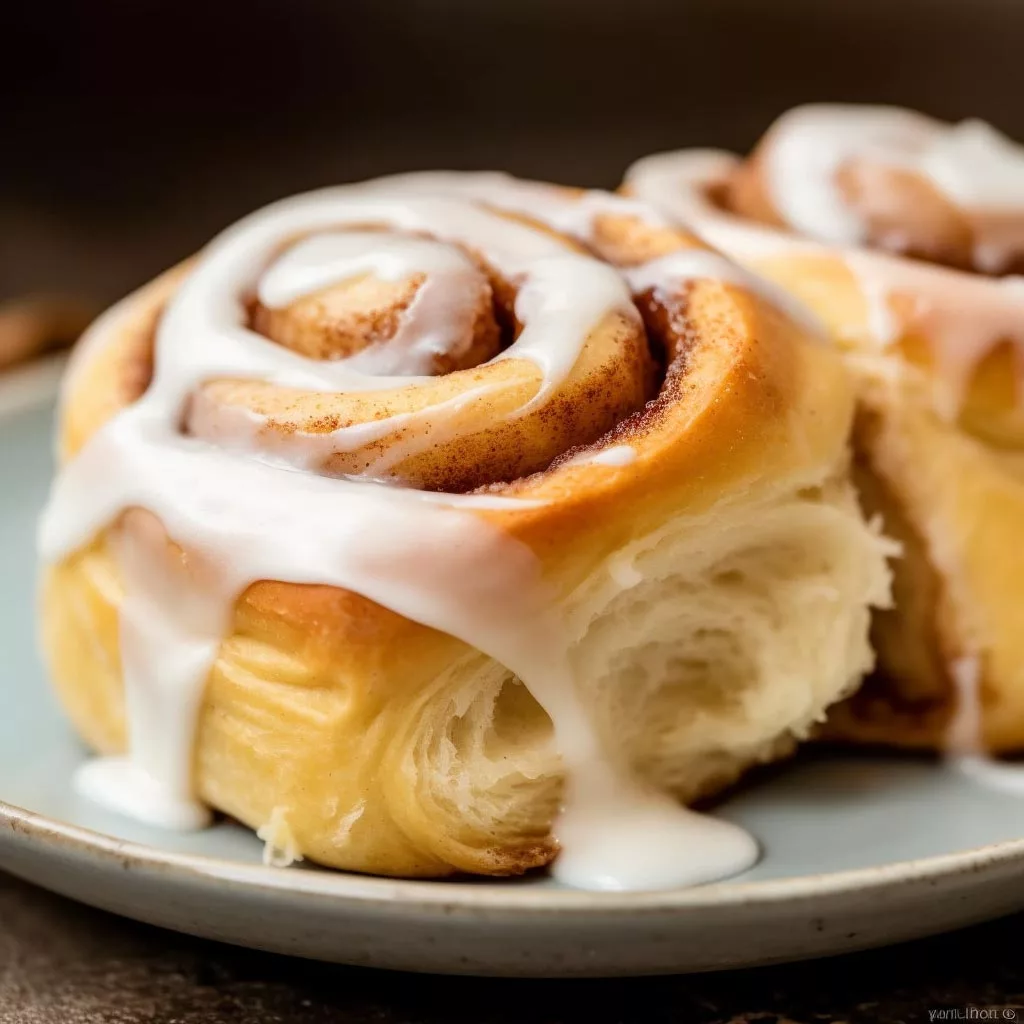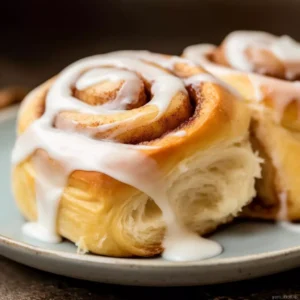
Cinnamon rolls, with their warm, comforting aroma and delightful swirls of cinnamon, are a beloved treat in many households.
Originating from Sweden, these sweet pastries have made their way into kitchens around the world, each with its unique twist on the classic recipe. While they may seem daunting to make from scratch, with a bit of patience and love, you can create your own batch of heavenly cinnamon rolls right at home.
The process of making cinnamon rolls involves a few steps, but don’t let that intimidate you. From preparing the dough to rolling and baking, each stage adds to the anticipation of biting into a soft, fluffy roll bursting with cinnamon goodness.
Whether you’re a beginner baker or a seasoned pro, this recipe offers a delightful challenge that’s worth every moment.
Creating cinnamon rolls from scratch allows you to tailor the sweetness and flavor to your liking, ensuring a fresh, homemade taste that’s unmatched by store-bought alternatives.
Expert Tip: Don’t overfill the cinnamon rolls to prevent the filling from oozing out during baking.
Bread Flour: Provides the structure and texture for the dough, ensuring the rolls are light and fluffy.
Caster Sugar: Adds sweetness to the dough, balancing the flavors of the filling and glaze.
Salt: Enhances the overall flavor of the dough by balancing the sweetness and activating the yeast.
Instant Yeast: Leavens the dough, causing it to rise and become airy.
Milk: Adds richness and moisture to the dough, resulting in tender cinnamon rolls.
Butter (Unsalted, for dough and filling): Contributes to the dough’s flavor and texture, while also adding richness to the filling.
Eggs: Bind the ingredients together and provide structure to the dough.
Water: Helps hydrate the dough and activate the yeast, ensuring proper rising.
Brown Sugar (Light): Sweetens the filling and caramelizes during baking, creating a gooey, indulgent center.
Cinnamon (Ground): Infuses the rolls with warm, aromatic flavor, making them irresistible.
Icing Sugar: Forms the base for the glaze, adding sweetness and a smooth texture.
Milk (for glaze): Combines with icing sugar to create a creamy, sweet topping for the cinnamon rolls.
Expert Tip: Be patient with the dough, allowing it to rise until doubled in size for soft, fluffy rolls.
Expert Tip: Ensure the yeast is fresh and active for optimal rising of the dough.
Cinnamon rolls are best enjoyed fresh on the day they are baked. However, you can store leftovers in an airtight container at room temperature for up to 2 days or in the refrigerator for up to 5 days. Simply reheat in the microwave or oven before serving.
Yes, you can freeze unbaked cinnamon rolls for later use. After slicing and placing them in the baking tin, cover tightly with plastic wrap and aluminum foil, then freeze. When ready to bake, allow the rolls to thaw and rise in the refrigerator overnight before baking as directed.
Yes, you can prepare the dough and assemble the rolls ahead of time. After rolling and slicing the dough, place the rolls in the baking tin, cover tightly, and refrigerate overnight. In the morning, allow the rolls to come to room temperature and rise for 30-45 minutes before baking.
While yeast is traditionally used to leaven cinnamon roll dough, you can make a quick version using baking powder instead. However, the texture and flavor may differ slightly from yeast-based rolls.
Yes, you can experiment with different types of sugar, such as granulated sugar or dark brown sugar, to customize the flavor of the filling. Keep in mind that different sugars may affect the texture and sweetness of the rolls.
Here are some more recipes for you to enjoy! If you my recipes don’t forget to rate and leave a comment.
If you have any recipe suggestions, please do not hesitate to ask me. A great way to stay in contact with me is through Instagram, Facebook, Twitter and YouTube. Don’t forget to tag me @CookwithNabeela in your recipe photos!

Subscribe now to receive my latest recipes directly in your inbox. Stay up-to-date and never miss out!

I love to cook! I want to share with you my favourite, delicious family-friendly recipes. I want to inspire you to create fantastic food for your family every day.
Add your first comment to this post